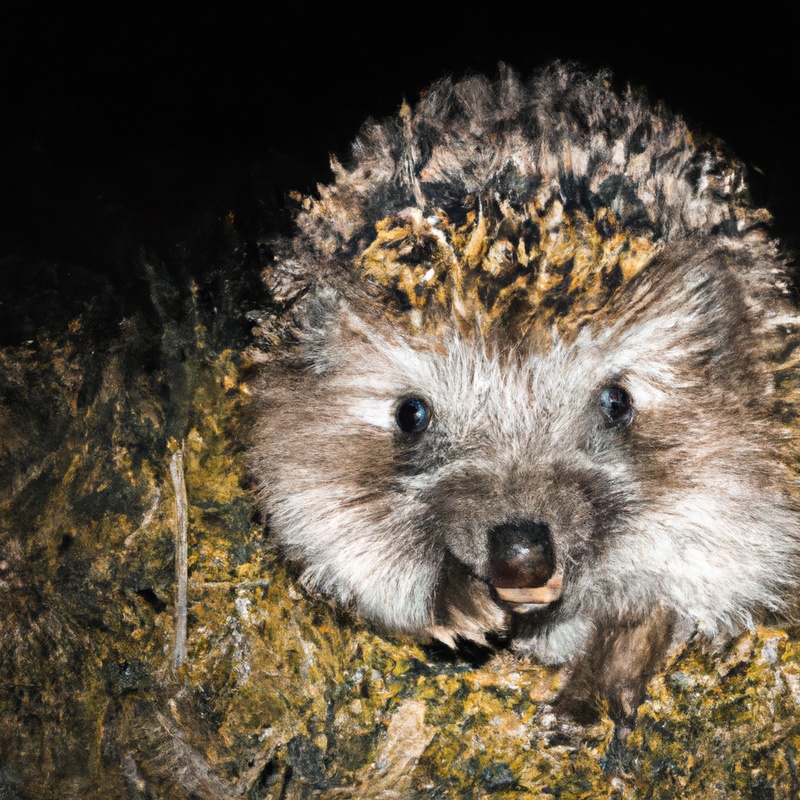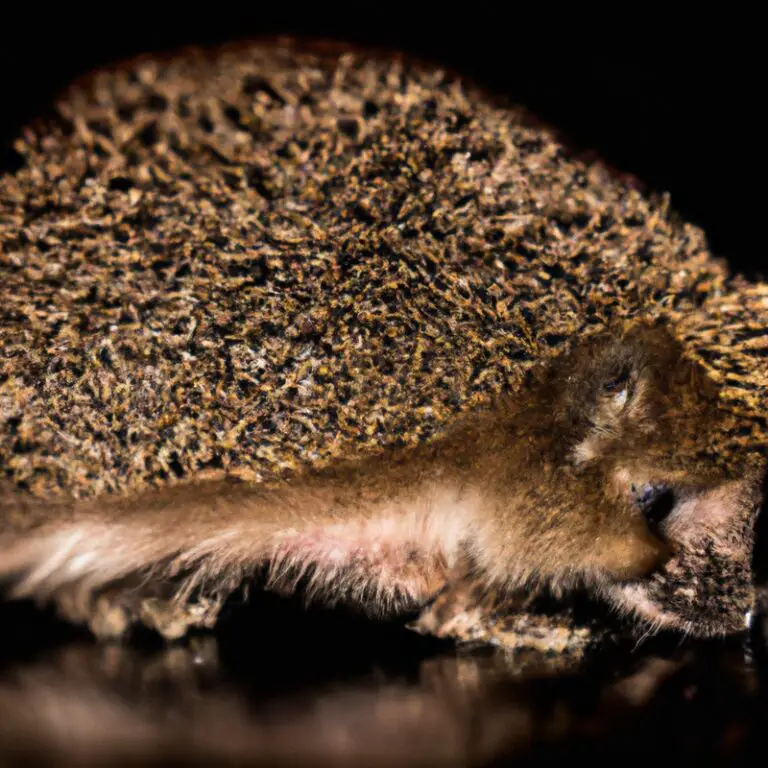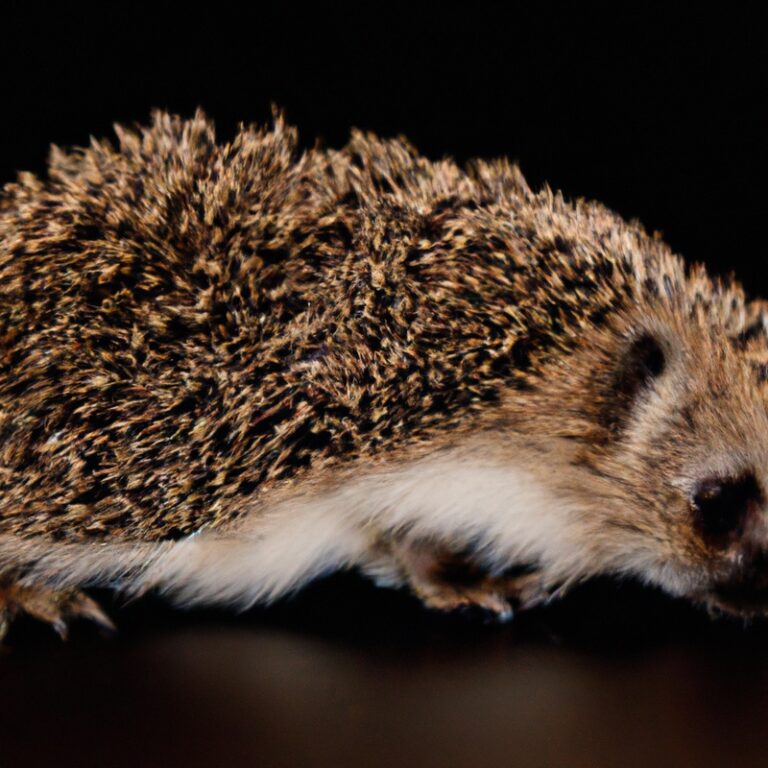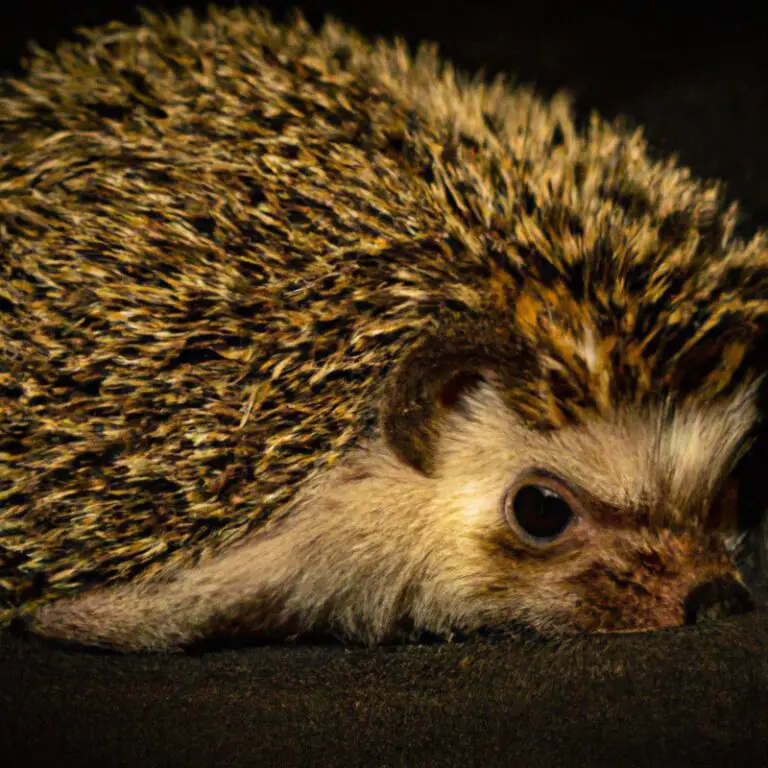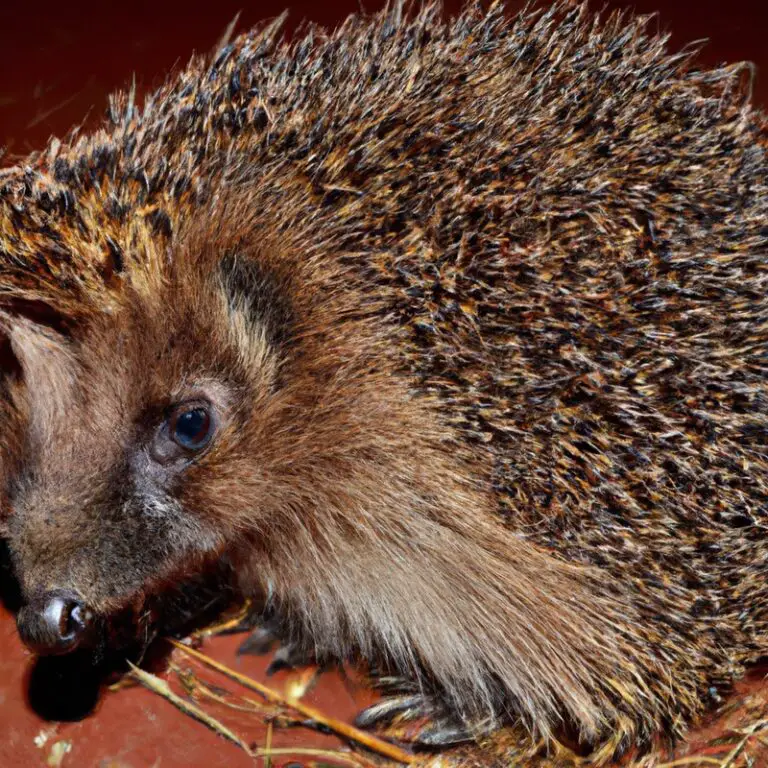What Is The Importance Of Hedgehog Conservation?
Key Takeaways:
- Hedgehog conservation is important for maintaining biodiversity and preserving natural ecosystems.
- Hedgehogs play a vital role in controlling populations of pests and insects.
- Protecting hedgehog habitats can contribute to the overall health and balance of the environment.
- Collaborative efforts are necessary to ensure the long-term survival of hedgehog populations.
Do you know that hedgehogs play a crucial role in maintaining the delicate balance of ecosystems? These small yet mighty creatures are not only adorable but also serve as valuable contributors to our natural world.
In recent years, however, hedgehog populations have been declining at an alarming rate, putting ecosystems at risk.
That’s why hedgehog conservation has become increasingly important. In this article, we’ll explore the significance of hedgehog conservation, the efforts being made worldwide to protect them, and how you can contribute to their preservation.
Get ready to dive into the fascinating world of hedgehog conservation and discover why these prickly creatures deserve our attention and support.
| Importance of Hedgehog Conservation |
|---|
| Ecological Role |
| 1. Predation on pests such as slugs, snails, and insects |
| 2. Seed dispersers – consuming fruits and spreading seeds |
| Biodiversity |
| 1. Indicator species for habitat health |
| 2. Provide a food source for predators (e.g., owls, foxes) |
| Education and Awareness |
| 1. Promote public understanding and appreciation of wildlife |
| 2. Raise awareness about habitat loss and environmental issues |
| Economic Benefits |
| 1. Tourism – hedgehog-watching and eco-tourism opportunities |
| 2. Conservation job creation (e.g., monitoring, research, rehabilitation) |
The Role of Hedgehog Conservation in Ecosystems
Hedgehog conservation plays a vital role in maintaining balanced ecosystems.
Understanding the Importance of Hedgehogs in Ecosystems
Hedgehogs are important in ecosystems for several reasons. Firstly, they play a crucial role in controlling pest populations by eating insects and other small creatures that could become pests.
Their diet includes slugs, snails, beetles, and worms.
Secondly, hedgehogs also contribute to seed dispersal by carrying seeds on their quills, helping plants to spread and regenerate. Lastly, as predators, hedgehogs can help maintain a balance in the ecosystem by controlling the population of certain prey species.
These are just a few ways in which hedgehogs are vital for the health and functioning of ecosystems.
The Impact of Hedgehog Decline on Ecosystems
The decline of hedgehogs can have a significant impact on ecosystems. Here are three key ways this decline affects the environment:
- Natural pest control: Hedgehogs are insectivores and feed on pests like slugs, snails, and insects. Their presence helps regulate populations of these creatures, preventing them from causing damage to plants and crops.
- Biodiversity: Hedgehogs play a role in maintaining biodiversity by controlling the populations of their prey. When hedgehog numbers decrease, it can disrupt the delicate balance of the ecosystem and lead to population explosions of certain species, which can have cascading effects on other plants and animals in the ecosystem.
- Seed dispersal: Hedgehogs inadvertently assist with seed dispersal. As they move around, they can transport seeds from one location to another, aiding in plant reproduction and helping to maintain healthy plant populations.
Overall, the decline of hedgehogs can disrupt ecosystem functions such as pest control, biodiversity maintenance, and seed dispersal, making their conservation efforts crucial for the wellbeing of our ecosystems.

Hedgehog Conservation Efforts around the World
Efforts to protect hedgehogs are underway worldwide through various conservation organizations and initiatives. Many countries are actively working to preserve hedgehog habitats and ensure their survival.
Conservation Organizations Working for Hedgehog Preservation
There are several conservation organizations around the world that are actively working towards the preservation of hedgehogs. These organizations play a crucial role in protecting these adorable creatures and their habitats.
Some notable organizations include the Hedgehog Preservation Society, the British Hedgehog Preservation Society, and the International Hedgehog Association.
These organizations work towards raising awareness, providing support and resources, and implementing conservation measures to ensure the survival of hedgehog populations. Their efforts are vital in safeguarding hedgehogs for future generations.
Efforts and Initiatives to Protect Hedgehog Habitats
Efforts and Initiatives to Protect Hedgehog Habitats are focused on preserving and improving the natural environments where hedgehogs live.
This includes measures like creating and maintaining wildlife corridors, establishing protected areas, and managing invasive species.
Additionally, efforts are made to educate the public about hedgehogs and promote responsible and sustainable practices, such as avoiding the use of pesticides and providing safe passage for hedgehogs in urban areas through small holes or gaps in fences and walls.
Overall, these initiatives aim to safeguard hedgehog populations and ensure their habitats remain suitable for their survival.
Benefits of Hedgehog Conservation
Hedgehog conservation has numerous benefits for both ecosystems and human communities.
Promoting Biodiversity through Hedgehog Preservation
Hedgehog preservation promotes biodiversity in several ways.
Firstly, hedgehogs are natural pest controllers and help control populations of insects, slugs, and snails, which can be damaging to gardens and crops.
Secondly, hedgehogs play a crucial role in seed dispersal by eating fruits and then spreading the seeds through their droppings.
Thirdly, hedgehogs provide a food source for other animals, such as birds of prey and foxes, contributing to the overall balance within ecosystems.
By protecting hedgehogs, we can help maintain a healthy and diverse natural environment.
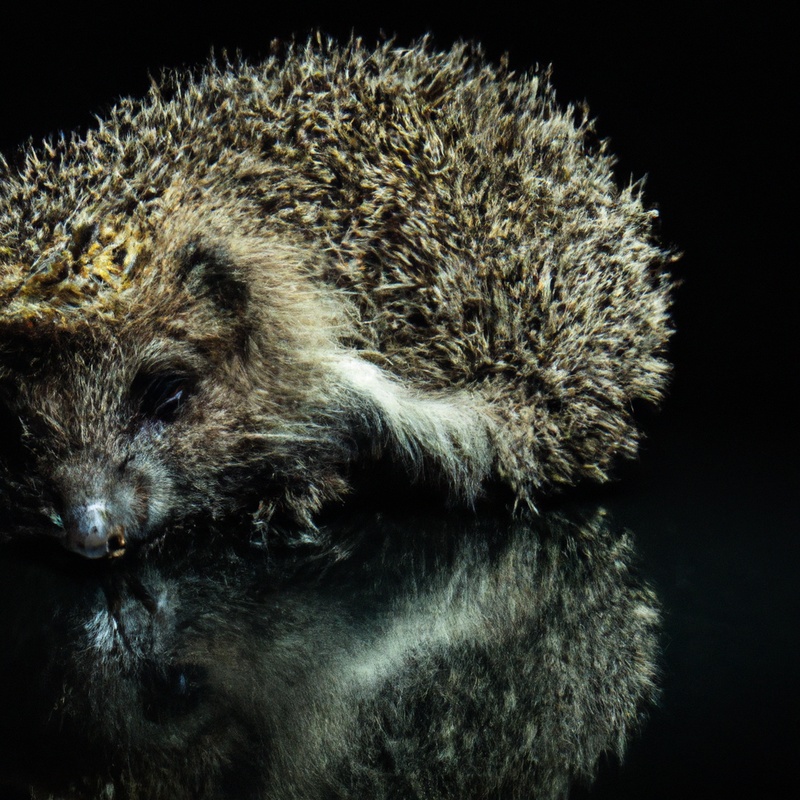
Hedgehogs as Natural Pest Controllers
Hedgehogs are natural pest controllers that can help keep your garden free of unwanted critters. These small, spiky creatures have a diet that includes insects, slugs, snails, and other pests that can cause damage to your plants.
Hedgehogs are especially effective at controlling slug populations, as slugs are a hedgehog’s favorite snack.
By allowing hedgehogs to thrive in your garden, you can reduce the need for chemical pesticides and promote a more eco-friendly approach to pest control. So, if you’re looking for a natural and sustainable way to keep pests at bay, consider welcoming hedgehogs into your garden.
The Future of Hedgehogs and Conservation Challenges
The future of hedgehogs is at risk due to conservation challenges. Climate change is one of the major threats they face.
Threats to Hedgehog Populations
Hedgehog populations are facing multiple threats that are putting their survival at risk. One major threat they are facing is habitat loss due to urbanization and the destruction of hedgerows.
This reduces the availability of suitable areas for hedgehogs to live and find food.
In addition, the use of pesticides and chemicals in agriculture negatively affects hedgehogs by reducing their prey availability and harming their health. Road traffic also poses a significant danger to hedgehogs, as they often get hit by vehicles while searching for food or trying to cross roads.
Finally, climate change is impacting hedgehogs, as it alters their hibernation patterns and affects their food sources.
These threats highlight the urgent need for conservation efforts to protect hedgehog populations and their habitats.
Climate Change and its Effects on Hedgehogs
Climate change poses a significant threat to hedgehogs and their survival.
Rising temperatures can lead to changes in the availability of food and water, making it harder for hedgehogs to find adequate resources.
Changes in weather patterns can also disrupt hibernation cycles, impacting their ability to conserve energy and survive the winter.
Furthermore, extreme weather events, such as intense heatwaves or storms, can directly harm and even kill hedgehogs.
It is crucial that we take action to mitigate climate change and protect the habitats of these adorable creatures.
How Individuals Can Help in Hedgehog Conservation
You can play a significant role in hedgehog conservation by creating hedgehog-friendly gardens and reducing hazards to promote their safety.
Creating Hedgehog-Friendly Gardens
Creating a hedgehog-friendly garden is a wonderful way to support hedgehog conservation.
Here are some simple steps you can take:
- Provide shelters: Create a safe space for hedgehogs to hibernate and nest by leaving areas of your garden untidy, with piles of leaves or logs.
- Avoid chemicals: Minimize or eliminate the use of pesticides and slug pellets, as they can be harmful to hedgehogs and their food sources.
- Water sources: Ensure there is a shallow dish of fresh water available for hedgehogs to drink from and bathe in.
- Hedgehog highways: Create small openings in fences and walls to allow hedgehogs to roam freely between gardens in search of food and mates.
- Food and feeding stations: Leave out bowls of food, such as wet cat food or specialized hedgehog food, and place them in a quiet, undisturbed area of the garden.
By taking these steps, you can make a positive impact and help hedgehogs thrive in your local area.
Your garden can become a haven for these charming creatures!
Reducing Hazards and Promoting Hedgehog Safety
Reducing hazards and promoting hedgehog safety is essential for their conservation. To do so, ensure your garden is hedgehog-friendly by removing hazards like garden netting and chemicals.
Encourage hedgehog movement by creating gaps in fences or installing hedgehog highways.
Provide a safe shelter with a hedgehog house, leaves, or log piles. Avoid using pesticides, slug pellets, and artificial lighting as they can harm hedgehogs.
By taking these simple steps, you can contribute to the well-being and survival of these adorable creatures.
Frequently Asked Questions about Hedgehog Conservation
What are the main reasons for the decline in hedgehog populations?
The main reasons for the decline in hedgehog populations include habitat loss, fragmentation, climate change, and human activities.
Urbanization has led to the destruction of hedgerows and gardens, reducing their suitable living spaces.
The fragmentation of habitats by roads and fences prevents hedgehogs from accessing food and mates.
Climate change disrupts their hibernation patterns and affects their food availability.
Additionally, the use of pesticides, cars, and certain garden practices also contribute to their decline.
How can I contribute to hedgehog conservation in my local area?
You can contribute to hedgehog conservation in your local area by taking a few simple steps.
Start by creating a hedgehog-friendly garden by leaving some wild areas, providing food and water, and avoiding the use of pesticides.
You can also participate in local conservation initiatives, such as joining a hedgehog rescue or contacting your local wildlife organization for guidance.
Finally, raising awareness about hedgehog conservation among your friends, family, and community can also make a difference.
Together, we can help protect these adorable creatures!
Final Verdict
Hedgehog conservation plays a crucial role in maintaining ecosystems worldwide. By understanding their importance and the impact of their decline, we can work towards preserving these remarkable creatures.
Conservation organizations and initiatives are working tirelessly to protect hedgehog habitats and promote biodiversity.
Hedgehogs also provide a natural pest control service, making them valuable allies in maintaining ecological balance. However, challenges such as threats to populations and climate change pose significant risks to their existence.
Individuals can contribute by creating hedgehog-friendly environments and promoting their safety.
Let’s come together to ensure the future of hedgehogs and safeguard our ecosystems for generations to come.

